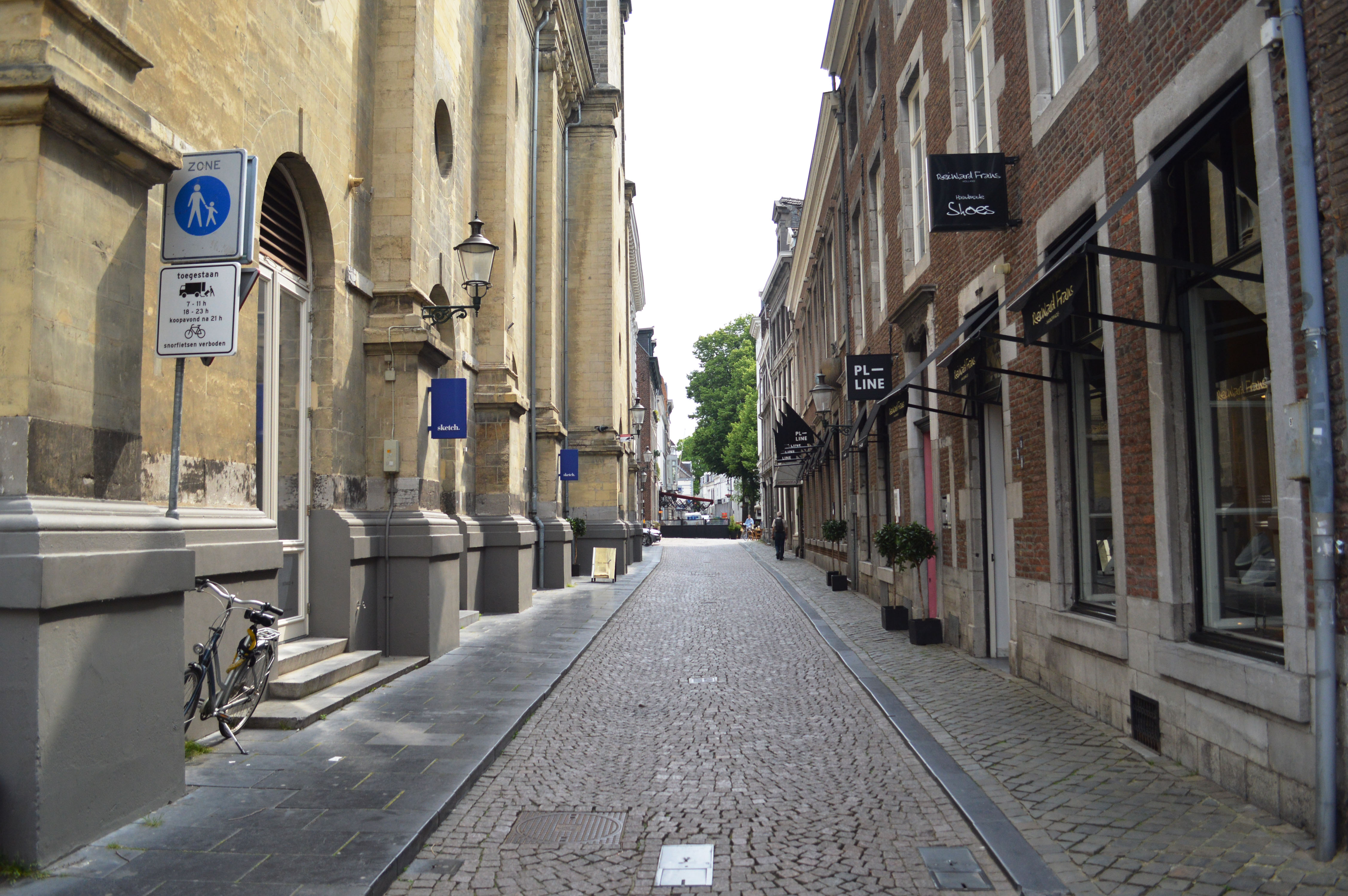
 |
| Fig. 37: Location of the Bredestraat |
The Bredestraat (Platea Lata; Wide Street) is the old connecting route between the Church of Our Lady and the Saint Servatius Church, formerly known as Via Regia. The street bore the name 'royal road' because the confirmation of the coronation rituals of the German emperors took place via this road: they were dressed in the Saint Servatius Church and walked via the Bredestraat to a mass in the Church of Our Lady. The fact that coronations were confirmed in Maastricht indicates the importance that the German emperors gave to the city of Maastricht and to the Saint Servatius Church as a church under immediate control of the emperor, following the example of the old Carolingian rulers. The Via Regia continued on the south side of the current Vrijthof, where the Saint John Church was later built. In addition, the road passed the once most important entrance to the Saint Servatius Church, the Bergportaal (construction started in 1175). This was the "royal" entrance to the church, to be used only by dignitaries. The road originally ran further out of the city, upwards and out of the Meuse valley, in a westerly direction, to connect outside the city with the original Roman road that led to the city of Tongeren, in modern-day Belgium. The fact that the Bredestraat was one of the most important roads in Maastricht is also reflected in the monumental gated houses along that street, which have been preserved to this day.
 |
| Fig. 52: The Bredestraat today. |
Reference:
Schaepkens van Riemst, J., “Eenige bijzonderheden omtrent straten, pleinen en bewoners van het oude Tricht”, in: Publications de la Société Historique et Archéologique dans le Limbourg, 43 (1907), 39-369; PSHAL 67 (1931), 187-232; PSHAL 68 (1932), 71-112; PSHAL 69 (1933), 63-86.